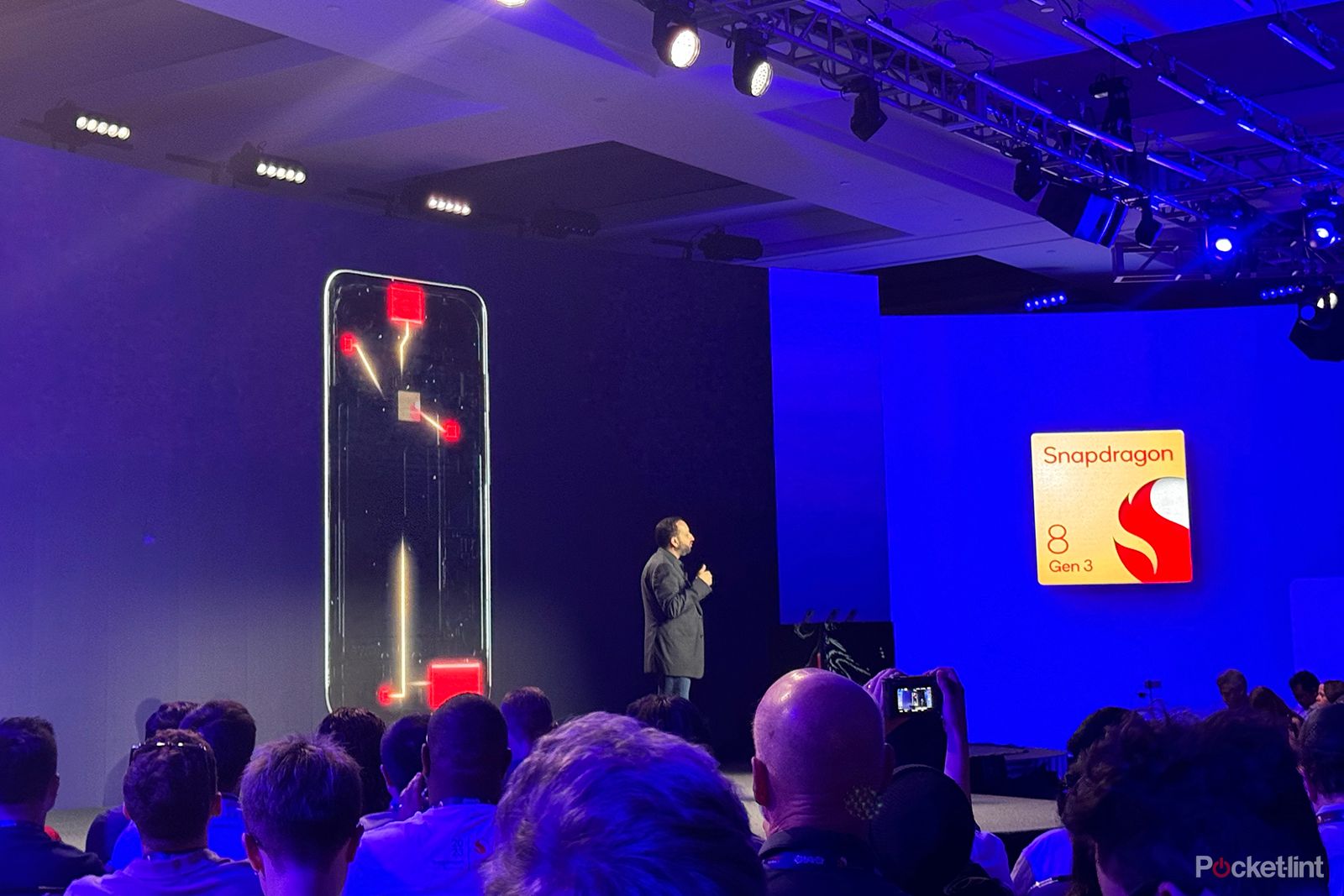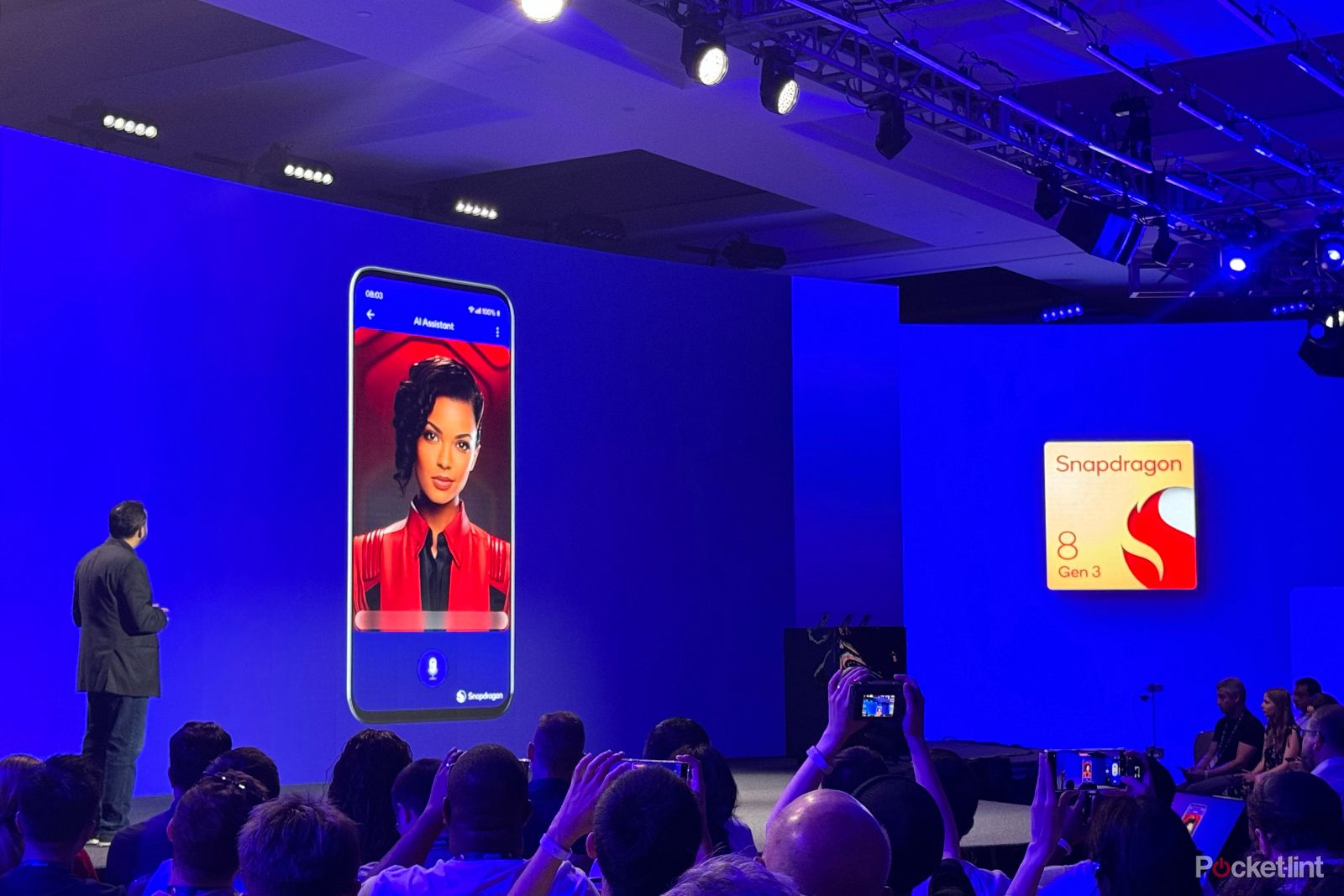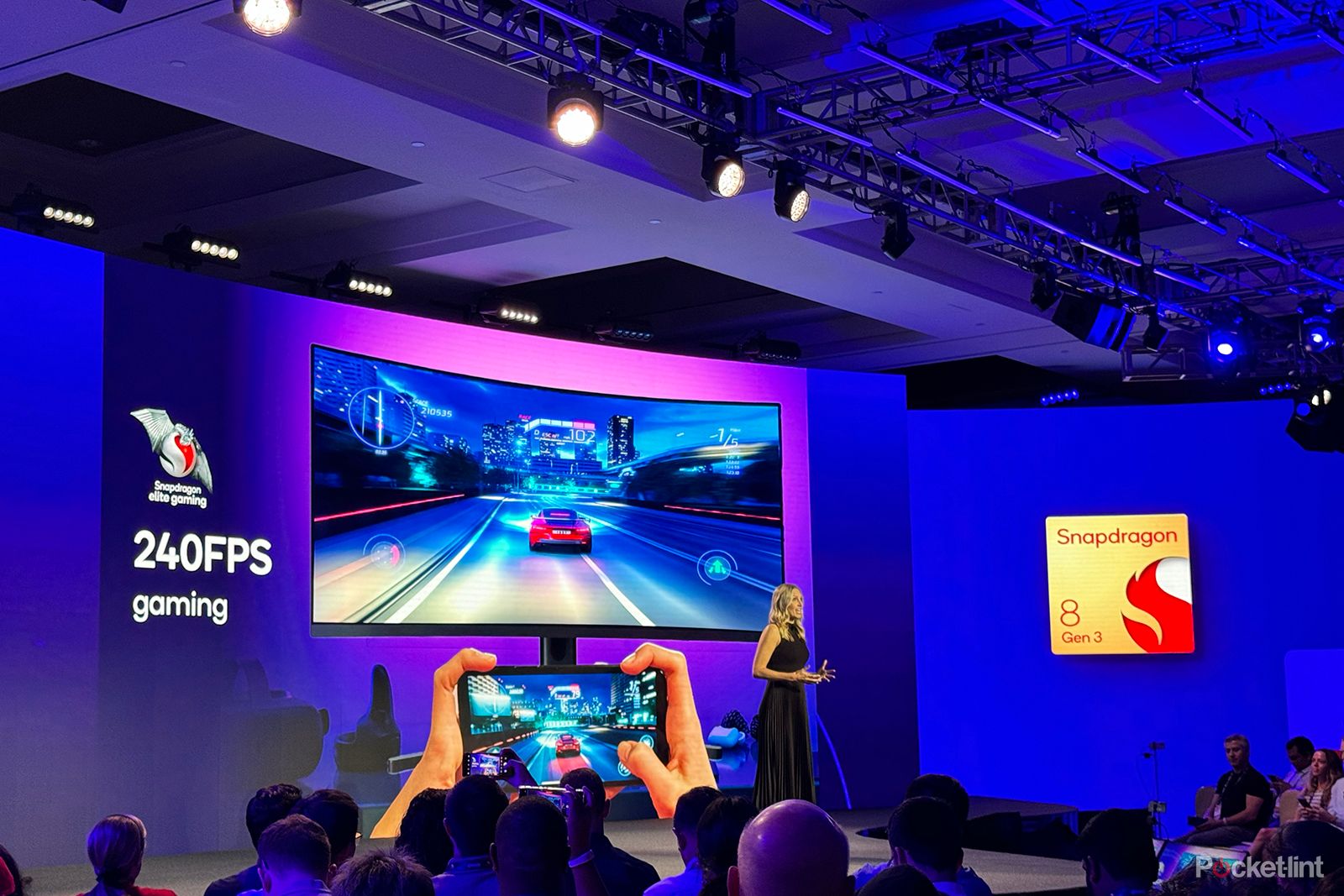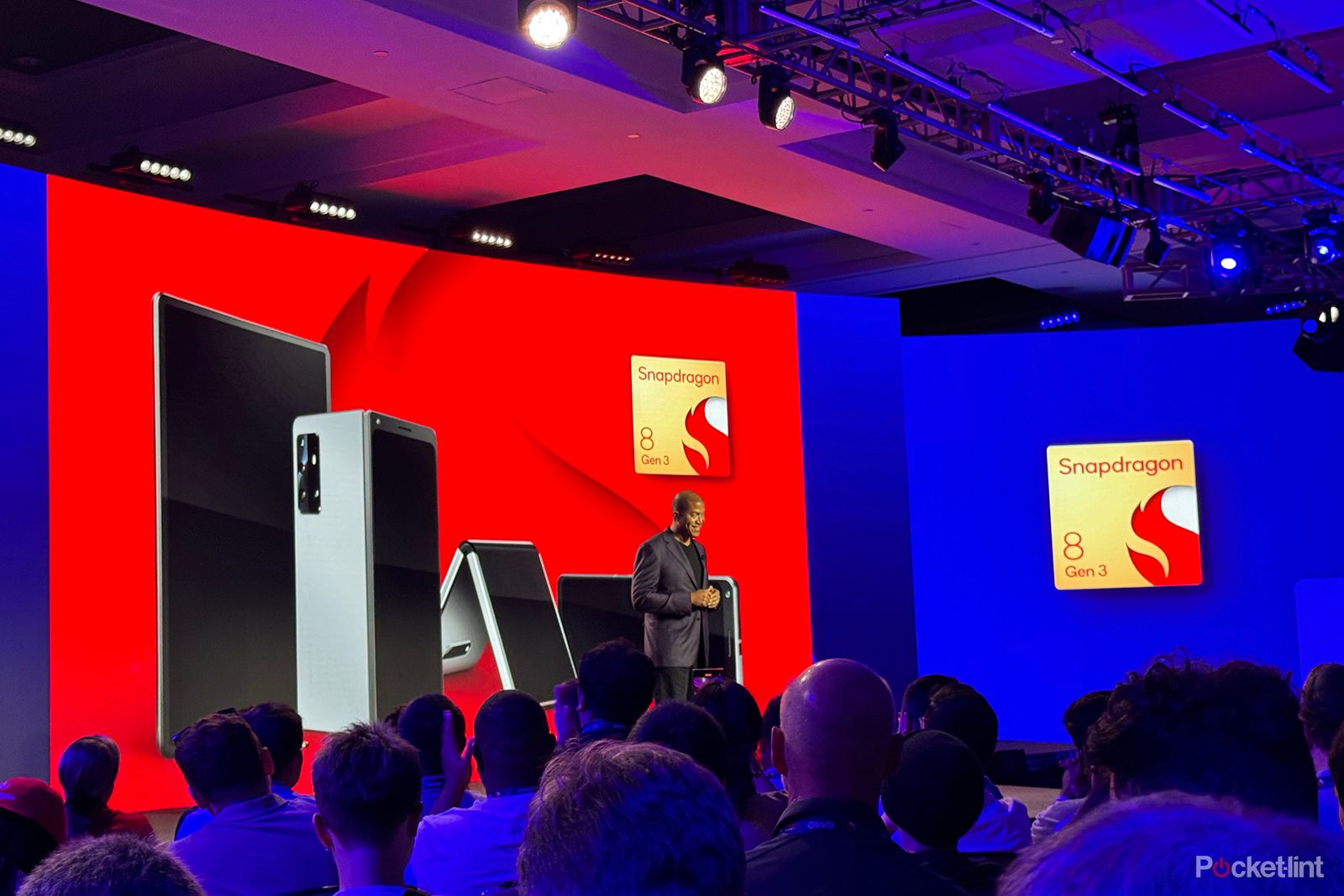Key Takeaways
- The Snapdragon 8 Gen 3 platform offers significant improvements in performance and efficiency compared to its predecessor, with a 30 per cent performance boost and 20 per cent more efficiency.
- The platform focuses on bringing generative AI to smartphones, enabling personalised AI responses and enhanced camera capabilities, including AI photo expansion and night vision video capture.
- The Snapdragon 8 Gen 3 supports up to 4K displays, offers advanced gaming features like 1Hz to 240Hz variable refresh rates and hardware-accelerated Ray Tracing, and provides high-quality audio with support for lossless music and low-latency Bluetooth streaming.
Qualcomm announced its latest flagship mobile platform – the Snapdragon 8 Gen 3 – during its Snapdragon Summit and this year, it isn’t just about speed enhancements compared to the previous generation – the Snapdragon 8 Gen 2.
The company spoke a lot about artificial intelligence and bringing AI on device to bring new experiences to smartphones. That’s only part of the story however, as the platform brings a number of improvements across the board, including new features and performance boosts.
This is everything you need to know about the Snapdragon 8 Gen 3 platform, including what it will deliver to Android smartphones that use it – one of which has already been announced – what features it supports and what devices we can expect to run on the platform.
How powerful is the Snapdragon 8 Gen 3?
The Snapdragon 8 Gen 3 is based on a 4nm process with 64-bit architecture, like the Snapdragon 8 Gen 2. Compared to a 5nm process, a 4nm process allows for shorter travel of current within the CPU, resulting in greater efficiency and power saving potential. For the Snapdragon 8 Gen 3, Qualcomm has said there is a 10 per cent power saving overall compared to the Snapdragon 8 Gen 2, and there are improvements across all subsystems.
There have been some changes to the structure of the next-generation mobile platform with a 1:5:2 configuration compared to the previous platform’s 1:4:3. This sees the Snapdragon 8 Gen 3 offer a main prime core up to 3.3GHz, five performance cores up to 3.2GHz and two efficiency cores up to 2.3GHz. It means there’s an extra performance core and one less efficiency core compared to the Snapdragon 8 Gen 2, or if you’re comparing it to the first generation of the Snapdragon 8, then you’ll find two more performance cores on the latest platform and two less efficiency cores.
All this translates to the Snapdragon 8 Gen 3 claiming to deliver a 30 per cent bump in performance compared to the Snapdragon 8 Gen 2 and 20 per cent more efficiency. It is also said to offer 25 per cent faster graphics, 25 per cent better power efficiency and 40 per cent better Ray Tracing capabilities, so there are a number of improvements here.
There have also been significant improvements to the Hexagon NPU, which is the element responsible for on-device AI. For the Snapdragon 8 Gen 3, it’s said to be 98 per cent faster than the Snapdragon 8 Gen 2, as well as 40 per cent more efficient. The Sensing Hub has been upgraded too, with INT4 precision support, 30 per cent more memory and up to 3.5x more power in terms of AI performance.
Elsewhere, the Snapdragon 8 Gen 3 supports LLDRX5 RAM up to 4800MHz, which comes in handy for rapid processing of computational tasks, such as AI, and there’s also support for Wi-Fi 7, 5G Advanced Relay and Dual Bluetooth.
What features does the Snapdragon 8 Gen 3 support?
The Snapdragon 8 Gen 3 has been designed with generative AI in mind. It was a topic of the Snapdragon Summit event, not just with the Snapdragon 8 Gen 3 platform, but the company’s new X Elite platform for PCs too. There’s plenty to talk about with regards to AI, but there are other features worth highlighting too. Here is a breakdown of the key elements.
Generative AI
AI is everywhere now and the Snapdragon 8 Gen 3 makes it a key focus of its offering. It wants to deliver a new era of generative AI-powered assistants and transform the way we interact with our smartphones and it’s claiming to be the “titan of on-device intelligence”. We’re not just talking about the potential of faster Google Assistant responses here. Instead, we’re talking about receiving a text message about meeting up on Sunday with a friend and your phone being able to tell you the times you’re free on Sunday, whilst offering up suggestions of where you could go with your friend, all on your device without the need to go into the cloud. Other demonstrations saw the ability to ask the AI assistant to look at flights to a particular destination, feedback dates and times and airlines, and have it come back with options as well as then open a flight booking app.
This is all thanks to the Sensing Hub that can use your data, such as favourite activities, fitness level, and location, to allow an AI virtual assistant to give you more personalised responses. The Snapdragon 8 Gen 3 features Qualcomm’s first AI engine to support multi-modal generative AI models, including large language models (LLM), language vision models (LVM), and transformer network-based automatic speech recognition (ASR) up to 10B parameters all on-device so there is heaps of promise here. Honor has already announced that the Honor Magic 6 would run on the Snapdragon 8 Gen 3 and be powered by on-device LLM with 7 billion parameters.
The AI engine within the Snapdragon 8 Gen 3 is also claimed to offer the world’s fastest stable diffusion that will allow you to generate an image in a fraction of a second, while LLM models can run up to 20 tokens a second (or 20 words a second), which would enable quick response from personal AI assistants.
Cameras
The AI capabilities don’t just stop at offering personalised responses however, it’s also being used to enhance potential camera capabilities. Like its predecessor, Snapdragon Sight is on board the Snapdragon 8 Gen 3 platform, utilising a trio of 18-bit image signal processors for a range of potentially very exciting features, if smartphone manufacturers choose to adopt them of course.
The Cognitive ISP can allow for AI voice-activated photo and video editing, as well as individually optimise different components of your images in real-time, identifying objects, from grass to sky, skin to lips, hair to bodies and applying a custom treatment to each layer on device rather than relying on software processing. The Snapdragon 8 Gen 3 platform supports up to 12 layers – think of it like Photoshop layers – compared to the 8 layers offered on the Gen 2 platform, adding detail and vibrancy to images.
Night Vision video capture is promising to use AI to deliver great content even at night – much like Google’s Night Sight Video is expected to do when it arrives later this year on the Pixel devices – and this is offered at 4K 60fps. Meanwhile, there’s a Video Object Eraser by Arcsoft for video capture that removes unwanted people and objects at the tap of a finger.
A feature called Vlogger View allows you to share your selfie camera and rear camera video simultaneously, while Zoom Anyplace takes advantage of Samsung’s 200-megapixel sensor to allow for the capture of multiple videos, object tracking, and 2x and 4x zoom in 4K. In a real-world use case, this would allow you to zoom in on a subject and AI will track it rather than you having to hold your phone steady, for example.
There’s also something called Photo Expansion, which is interesting. We mentioned when Google launched the Pixel 8 Pro that many images it would produce would effectively be fake, and the same would apply here, though it is a neat trick. This feature in action allowed us to choose a photo from a gallery and generative AI filled in around the shot to give us a larger image, similar to what you might have got if you had taken the shot from a wider angle lens.
Other camera features that come to Snapdragon Sight with the 8 Gen 3 platform are HDR photo technology from Dolby that allows for capture and playback of images with greater range of colours, tones, and shades, and there’s also Truepic photo capture with C2PA-compliant certificate authority that will offer you information within the meta data to tell you when AI has been used in a shot.
Like the Snapdragon 8 Gen 2, the Snapdragon 8 Gen 3 offers support for 200-megapixel resolution, along with codec support for H.265, VP9 and AV1. Like its predecessor, the Snapdragon 8 Gen 3 also offers support for 30 frames per second capture at a huge 108-megapixel output for burst shooting, while for video, you can shoot 8K in 10-bit HDR and have enough capacity remaining to take 64-megapixel stills simultaneously. There’s also support for 8K HDR video at 30fps, 4K at 120fps and slo-mo at 720p at 960fps.
Displays
The Qualcomm Snapdragon 8 Gen 3 supports up to 4K displays, as well as external displays, just like the Gen 1 and Gen 2 versions of the Snapdragon 8 platform did. Many manufacturers don’t opt for 4K displays given their drain on battery life, but the support is there nonetheless, which no doubt Sony will appreciate for its Xperia Pro range.
There is support for Quad HD+ resolutions to run at up to 144Hz for on-device displays, while support for external displays is 8K up to 30Hz and 1080p at up to 240Hz. In an improvement over the Gen 2 platform, there is support for variable refresh rates between 1Hz and 240Hz, which allows for gaming at 240fps gaming – more on that in a second.
When it comes to high dynamic range (HDR), the Snapdragon 8 Gen 3 platform offers support for HLG, HDR10, HDR10+, HDRVivid and Dolby Vision formats, much of which is now very much standard on flagship smartphones.
Gaming
The Snapdragon 8 Gen 3 offers Snapdragon Elite Gaming, which is the company’s suite of gaming features and there are a number of improvements on offer compared to the previous generation platform. We mentioned the variable refresh rate support between 1Hz and 240Hz, and this allows for 240fps gaming on 240Hz displays. That should allow for super smooth, lag-free graphics. Gaming capabilities are further enhanced by the Unreal Engine 5.2 that allows for hardware accelerated Ray Tracing with Global Illumination, which should mean more realistic gaming experiences with better reflections.
Whether this is something gamers truly want on their smartphone remains to be seen for now, but for those that are interested in playing triple A games across platforms, the Snapdragon 8 Gen 3 is offering a number of useful features to try and make that experience as good as it can be on a smartphone.
Snapdragon Game Super Resolution is also on board the Snapdragon 8 Gen 3 platform, enabling upscaling game scenes up to 8K external display. This is open source and designed for studios who want to push visual limits of their games. Meanwhile, Adreno Frame Motion Engine 2.0 is on board to offer higher quality scenes thanks to higher frame rates but it’s claiming to be able to do so without impacting battery life. We mentioned previously that the Snapdragon 8 Gen 3 offers a 10 per cent saving in power compared to the Snapdragon 8 Gen 2 and it’s said this would translate to an extra hour of gaming.
Sound
There was less mentioned about audio for the Snapdragon 8 Gen 3 compared to the Snapdragon 8 Gen 2, though all of last year’s features are supported, as you would expect. That means there is Spatial Audio with head tracking, which like Apple’s version, puts you in the centre of the sound coming out of your smartphone, whatever way you move your head.
There is also support for 24-bit 96 kHz lossless music over Bluetooth. That means that – for devices that adopt Snapdragon Sound – you will be able hear excellent quality audio, wherever you are, with the sound quality adapting to your environment and the interferences around you. With the Snapdragon 8 Gen 3 too, a new Qualcomm Expanded Personal Area Network Technology (XPAN) allows for uninterrupted lossless audio when away from your phone or moving from room to room, which is the biggest improvement compared to the Snapdragon 8 Gen 2.
Bluetooth 5.4 handles wireless connectivity overall, while Snapdragon Sound Technology also supports the company’s aptX Voice, aptX Adaptive, aptX Lossless, and LE audio protocols. That means with the correct high-quality source and a capable enough headset, you’ll be able to achieve Hi-Res Audio playback – and the adaptive nature of the tech means you’ll always be getting the best on offer depending on what you’re using.
There’s support for low-latency Bluetooth streaming when gaming too. Qualcomm has said gameplay sound is synced to the millisecond, which is claimed to deliver zero lag for “tap to bang”, which means the time it takes between you tapping your screen while gaming to the sound you hear.
Connectivity
In true Qualcomm fashion, 5G connectivity plays a big part of the Snapdragon 8 Gen 3 platform. It utilises the Snapdragon X75 5G Modem-RF System, which is the first modem to offer an integrated AI tensor hardware accelerator. This is designed to deliver better speeds, coverage, mobility, link robustness, and location accuracy, though a lot of this will of course depend on other factors and circumstances.
Similarly, the Qualcomm FastConnectTM 7800 Mobile Connectivity System features Wi-Fi 7 claimed to offer “unstoppable speeds”, but that once again depends on whether you have a router that can support Wi-Fi 7. It’s said to be the only Wi-Fi system to support High Band Simultaneous Multi-Link for super speeds and low-latency performance, but that wouldn’t be a guarantee for many.
You get support for speeds up to 10Gbps, and there is support for both mmWave (8 carriers) and Sub-6GHz 5G technologies. That’s more important for customers in the USA, where mmWave adoption is suspected to increase, but integrating both formats remains a step ahead.
In a nutshell, the Snapdragon 8 Gen 3 is all about super-fast speeds on the go, with an unparalleled 5G offering.
When will Snapdragon Gen 2 devices launch?
Smartphones running the Qualcomm Snapdragon 8 Gen 3 platform will appear over the next few months and into 2024. It’s expected to appear on devices from a range of manufacturers with Xiaomi, Oppo and Honor all confirming their next flagships will run on the platform. Given it’s the flagship platform from Qualcomm, it is expected to come to premium smartphones rather than mid-range options.
Xiaomi will be the first company to release a device with Snapdragon 8 Gen 3 with the Xiaomi 14 series announced on 26 October 2023. Oppo said the platform will run its flagship devices, though didn’t specify which ones – and Honor announced the Honor Magic 6 would run on it.
We’d also expect to see the likes of Sony, OnePlus, Samsung and Motorola utilising the platform for their flagship smartphones in the coming year.
Trending Products























